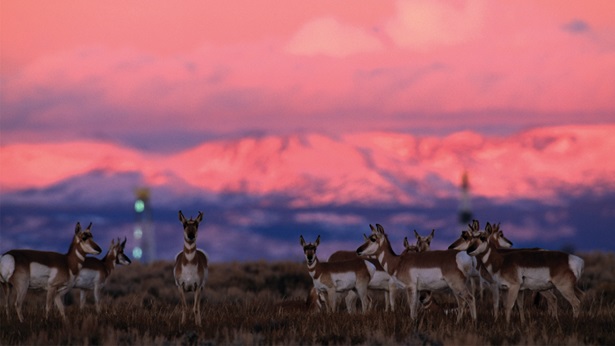Wildlife Migration Corridors in the Western U.S. Need Identification, Conservation
Research and analysis on vital habitat, human-animal interactions, and measures to improve safety for all

The seasonal migration patterns of North American wildlife such as mule deer, pronghorn antelope, and elk play an essential role in sustaining these animals throughout the year. Many species travel the same routes from summer to winter grounds, tracking the seasons as they seek food, refuge, and breeding grounds. Yet new highways, subdivisions, and energy developments are encroaching on the open spaces of the West, forcing animals to alter their routes or stop migrating altogether, threatening wildlife populations and increasing roadway hazards, especially in rural areas.
According the U.S. Department of Transportation, as many as 2 million collisions between motor vehicles and large animals occur each year in the United States, causing approximately 200 human deaths, 26,000 injuries, and at least $8 billion in property and other losses. In rural states such as Wyoming, wildlife-vehicle collisions can represent almost 20 percent of all collisions reported.
But solutions to this problem are coming into focus. Pinpointing critical migration habitat has never been easier thanks to new technology that is revolutionizing scientific understanding of migration behavior and timing. As more animals are outfitted with GPS collars that report key movement information, volumes of location data are enabling state and federal agencies to adopt smarter and more effective habitat conservation measures that can reduce wildlife-vehicle collisions on Western roadways.
These solutions are boosted by new efforts at both levels of government to make good public policy using cutting-edge scientific information.
The Pew Charitable Trusts and its partners are working with governors, wildlife and transportation officials, land managers, and scientists to incorporate the latest migration research into sound land, wildlife, and transportation policy. By enacting measures to keep existing migratory corridors functioning and restore some that have been severed, policymakers at the state and federal levels can help keep the nation’s vast natural spaces connected, make highways safer, and ensure that the iconic big-game species of the American West have room to roam.












